What are the best SERP features for SEO in 2020 and how to get them?
- 1 What is a SERP?
- 2 What is a SERP feature?
- 3 Which SERP features deliver the quickest wins for SEO in 2020?
- 4 SERP Features shown visually
- 5 SERP is also known as “enriched search results” or “interactive rich results”
- 6 Are SERP Features always a good thing?
- 7 Are these easy to get?
- 8 What steps can I take to get SERP features?
- 9 Conclusion: How to use SERP features to boost your SEO
- 10 References and further reading
Gaining organic traffic through SEO can feel like a long, arduous and confusing process.
To make matters more complicated, Google’s algorithms will typically spot – and potentially penalise – a website that attempts to take shortcuts and gain quick wins unnaturally.
This does not mean that there are no quick wins available for SEO in 2020, though. Used correctly, SERP features can be a great way to boost your SEO performance.
What is a SERP?
A SERP is a colloquial acronym that stands for Search Engine Results Page.
When a search term is entered into Google, the SERP will be the page that you then see. This will follow the usual formatting that we have all grown to know and love.
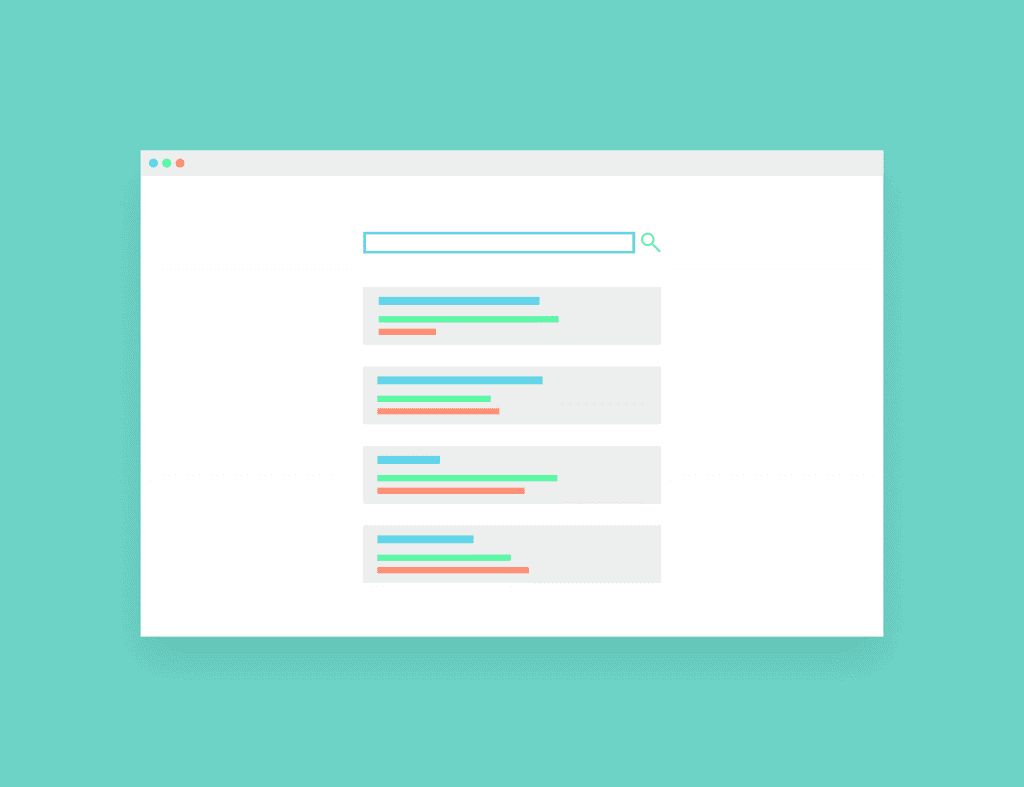
The front page of a Google search follows an unmistakable and consistent format
What is a SERP feature?
Over the years, search engines have evolved to understand what users are really searching for and how they expect information to be presented. We’ve covered this in our guide here:
A knock-on effect is that the good old traditional style of search results are long gone! Going back a couple of decades, our search results page main consisted mainly of something which looked much like below, i.e. a clickable title, short description and the web address for the result.

How a Google SERP used to look
You may think that things haven’t changed very much?
However in 2020, depending on what you search for, the SERP will typically contain any combination of many different available SERP features. Ranging from images, videos and news (all of which have been there in some shape or fashion from the start) to Featured Snippets and Knowledge Panels (more on these below), there search results page is now far richer and more geared towards what the end-user needs.
Which SERP features deliver the quickest wins for SEO in 2020?
Here are our Top 12 SERP features to understand in 2020:
- Sponsored results – Advertising purchased through Google AdWords, Bing Ads, etc., where the highest bidder on a particular keyword is usually assigned the top search result using PPC (Pay Per Click) methods. These results are preceded by the word Ad. and typically appear at the top and bottom of the page.
- Featured snippets – This is the large box (referred to as a featured snippet) that sometimes appears high up on the SERP to try and match the user’s search query perfectly and provide an immediate answer to the question
- People also ask – also known as Frequently Asked Questions, these are similar to featured snippets but provide an expandable list of questions and answers related to the user’s search
- Local results – Maps, local businesses (via Google My Business) and even weather information in geographical queries
- Reviews – reviews can appear in two places, both in the form of star ratings:
- against businesses showing in the Local results
- against organic search results related to a product (usually lower down on the SERP)
- Sitelinks – Sub-pages of a high-ranking website, these usually show just below the title and title and description, often containing pages such as Contact Us, About Us, etc.
- Media – Depending on the search term, images and videos will often be returned from websites that match the users’ query
- Shopping results – these only show whether the user’s search intent is e-commerce related and they are looking to view/buy products
- News and top stories – Recent news stories for trending topics related to the search
- Knowledge panel – These are boxes to the right of the page, offering a summary or key information relating to the search. These are common when searching the name of a public figure or major business and often pull information from sources like Wikipedia and Google My Business
- Breadcrumbs – These show the menu/navigation trail for where the suggested result is located on the site being returned
- Related or suggested searches – These take many different forms and will show other queries which Google believes are related to the one entered, e.g. these are useful to give other ideas, or perhaps because they are a better match for the search intent
The list here is by no means definitive and there are many other SERP features available and other variations of the ones mentioned, but these would be our top 12 to understand in 2020.
SERP Features shown visually
Sponsored results
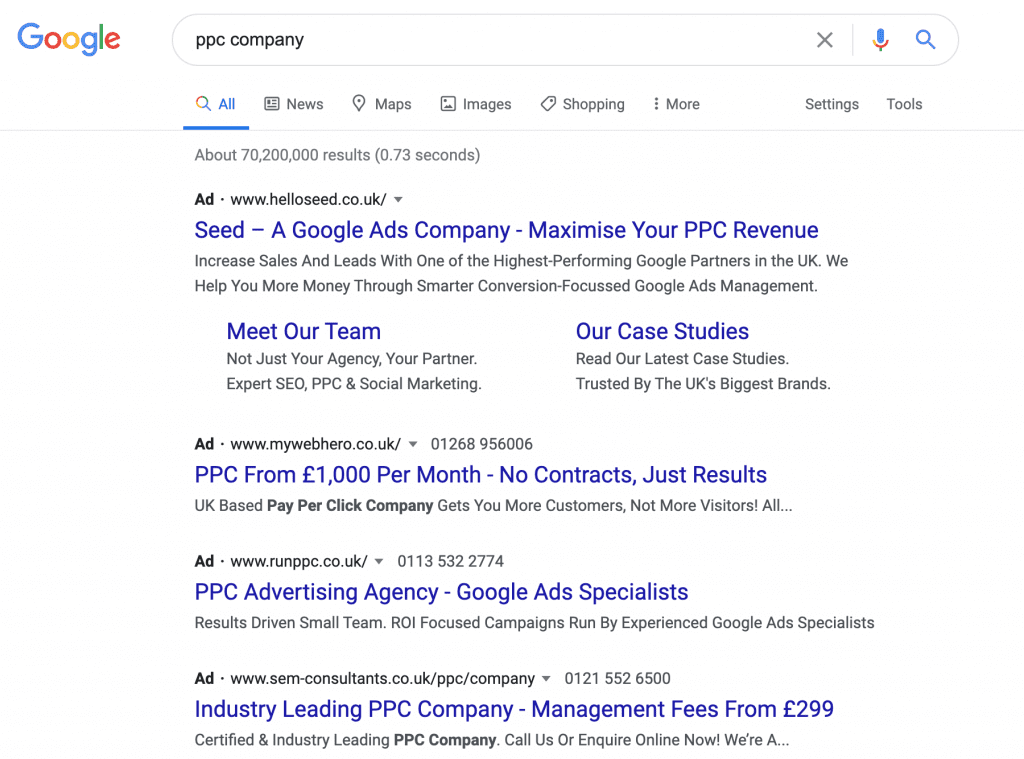
An example showing paid-for sponsored results
Featured snippet
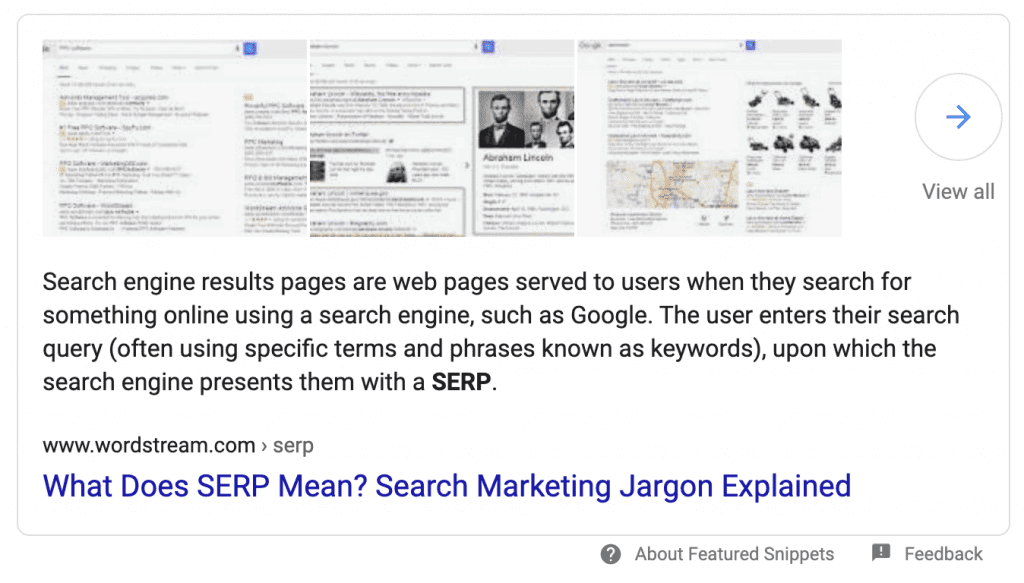
An example showing a Featured Snippet
People also ask
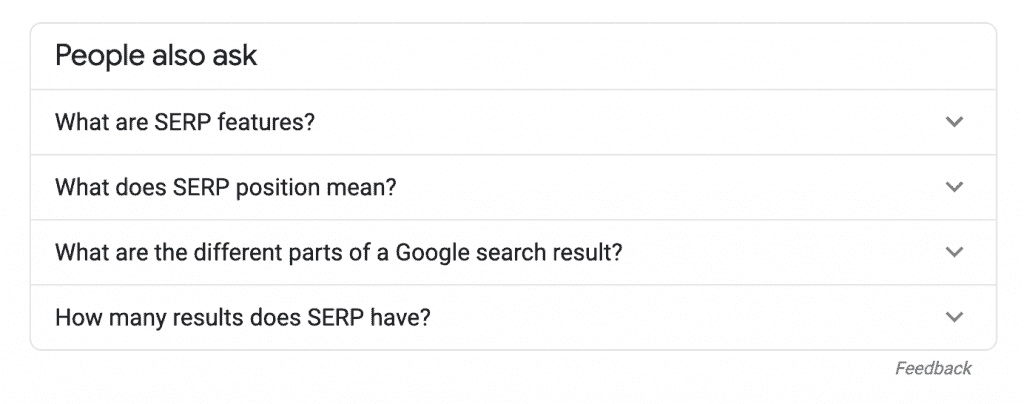
An example showing a “people also ask” box
Local results
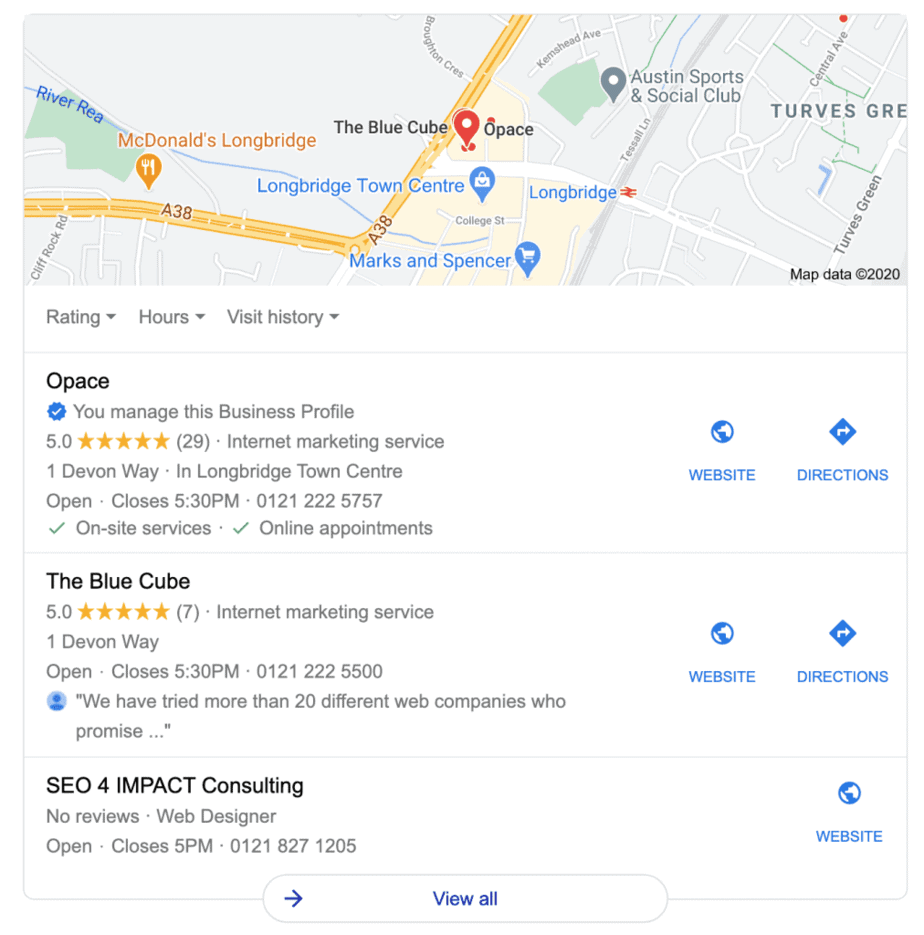
An example showing local results and Google My Business listings
Reviews

An example showing organic reviews as a result of schema mark-up
For further reading on reviews, read more below:
Sitelinks

An example showing sitelinks or sub pages
Media

An example showing image media in search results
News and top stories
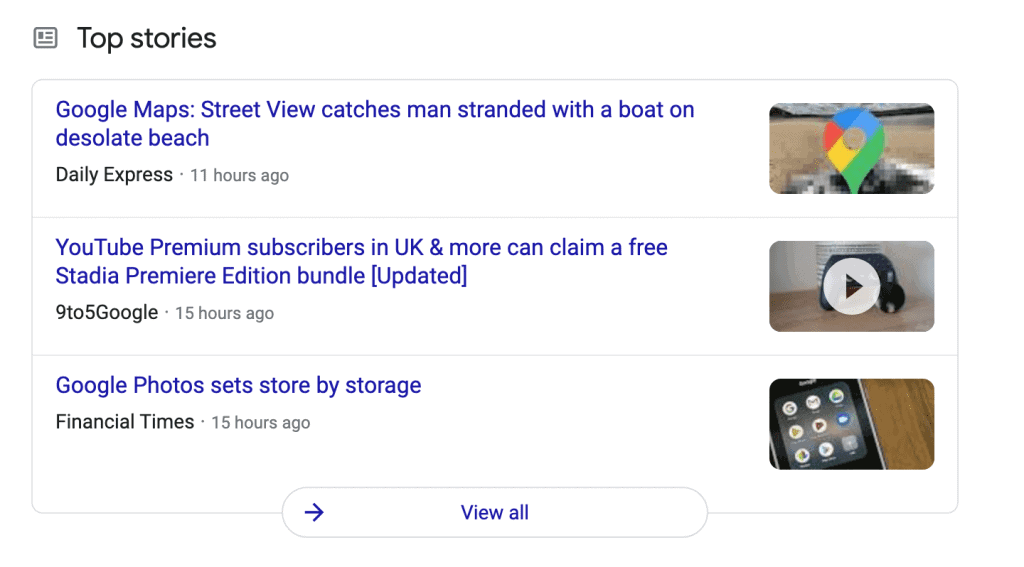
An example showing news and top stories
Knowledge Panel
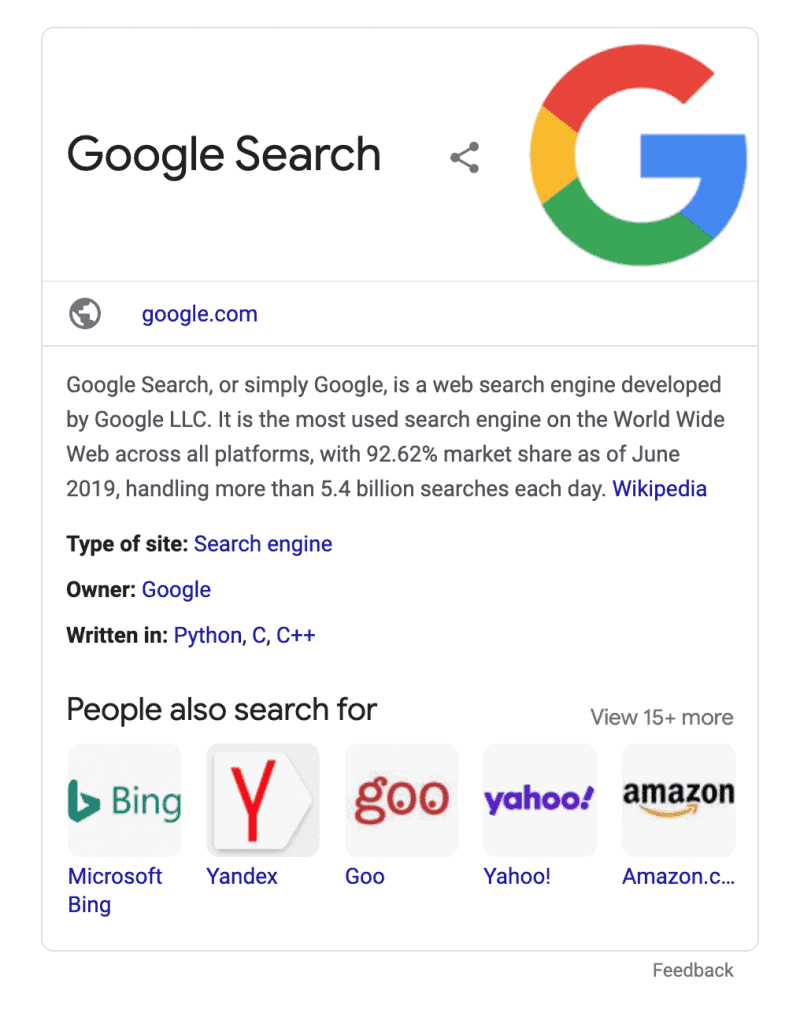
An example showing the Knowledge Panel
SERP is also known as “enriched search results” or “interactive rich results”
As a side note, SERP is not a term officially recognised by Google. Instead, Google will refer to SERP features as enriched search results or interactive rich results1.
Bear this in mind when researching SERP features to utilise on your website.
Are SERP Features always a good thing?
Short answer, “no”, but mostly “yes”.
The SERP features mentioned above appear together with the more traditional style of organic search results. This means that, while SERPs can provide a huge benefit to SEO in 2020, they can also hinder and much as help. For example:
- If multiple competitors have paid for SERPs using AdWords or Bing Ads, organic results will be pushed down the first page, meaning PPC results may “steal” traffic away from the organic ones
- Showing in the “people also ask” box is great for gaining visibility on Google but it may actually mean fewer clicks to your website if the user finds an answer without leaving Google
These are just two examples.
Are these easy to get?
Probably the simplest SERP feature to acquire in 2020 is a paid result using AdWords.
If you meet the criteria laid out by Google2, this can be a quick win in terms of driving traffic to your website. Your site will usually appear above organic search terms and the results are almost instant.
However, weigh up the cost implications of utilising this SERP feature. Is the financial outlay – bearing in mind that you’ll be bidding against competing sites that may have deeper pockets – justified by the net gains? You may prefer to gain SERPs without spending money forever.
The other important note to consider is that paid results will often generate a completely different type of traffic to organic. Based on our experience of delivering both paid and organic (SEO) services for over 10 years, the quality of organic traffic is nearly always better. That’s not to say, paid advertising doesn’t have a role to play – for many, it may be the only viable solution, especially where new businesses are considered.
The ease of obtaining popular organic SERPs, in order, is:
- Local / Maps / Knowledge Panel – Having a local geographical focus, makes this SERP feature relatively east to obtain. By simply signing up for a Google My Business account and making the most of the fields/features available to describe your organisation will take you a long way
- Reviews and ratings (if applicable) – Just seek out reviews from customers using Google My Business, request reviews from other reputable sites or add the correct schema mark-up to show reviews on your own website. With a minimal amount of effort, the rewards can be ten-fold
- Sitelinks and website sub-pages – Simply having a clear and focussed structure to your site and main menu makes this an easy one to achieve
- Media (videos and images) – Another quick win is simply giving your media keyword-focused file names and making sure any text you add when embedding them, e.g. ALT text for images, captions, video titles/descriptions contains those keywords
- Shopping results (if applicable) – There are different ways to show shopping results or products in SERPs but one of the easiest is to just add them to your Google My Business listing and configure your site/AdWords account to show them in paid results
- News – The easiest way to get visibility via News SERPs is to submit a story or news article to a Google News approved publisher – there are many online PR providers out there who offer this service, just make sure you select a good quality provider who moderates content to avoid spam
These are some of the easier SERP features to gain in 2020. Featured snippets and “people also ask” are two of the more difficult SERP features to obtain as they rely on a degree of technical SEO know-how. These are worth pursuing though, as they can be worth their weight in gold when it comes to SEO.
What steps can I take to get SERP features?
The fastest way to see effective results on your SERP features is to appeal to Google’s E-A-T algorithm update5. Ensure that your web page meets user search intent, speak with authority on your chosen subject and – above all – fill your site with relevant, superior content.
2. Structure your content for snippets
It’s important to understand that snippets are assigned by Google based on keywords perfectly matching a user’s search intent. This is why so many sites utilise numbered lists and bullet points. For this reason, think very carefully about how you structure your content and what questions you are answering. This includes the use of sub-headings, lists and tables.
3. Use schema and structured data
Adding schema or structured data to your website6 will help to enrich your content with other useful information to help guide Google, e.g. you can inform Google that your content is related to the following:
- Creative works e.g a book, movie, recipe, etc.
- Event
- Organisation
- Person
- Place, local business, restaurant, etc.
- Product, service or offer
- Review
Or any of the other schema types available.
4. Rank well
If a user enters the search term, “10 best places to see the Northern Lights”, Google clearly understands what the user wants to know. Google will then create a snippet from a site with a high CTR deemed authoritative and trustworthy. It’s rare for a site ranked outside the top 5 to qualify for a Featured Snippet3 so it’s important that you already have or build up a strong natural SEO profile.
Gain traction by acquiring high-authority backlinks and getting your site mentioned on as many external resources as possible will help to boost your overall authority. Wikipedia, for example, may have a reputation for not always being reliable, but its popularity means that it plays a significant role in gaining a knowledge panel SERP.
5. Skyscraper technique
To boost your chances of gaining this SERP feature, alter your search term. Consider using the skyscraper technique4 to provide 12 or 13 options in your list and create additional value to the user. Alternatively, use synonyms in your keywords to work within a narrower field of search queries.
If your site qualifies for a featured snippet, you’ll enjoy a captive audience. Many users on Google will gravitate to the first site that answers their question. By utilising this SERP feature successfully, you’ll attract more clicks and traffic than your competitors. This will continue to bolster your website’s ranking under the E-A-T algorithm.
Conclusion: How to use SERP features to boost your SEO
SERP features can be a great SEO advantage in 2020. If you’re utilising SERPs, chances are that you will gain more overall visibility than your competition Google’s first page. This greatly enhances your chances of being seen and gaining traffic to your website. Final thought… in many respects, SERP features are a chicken-and-egg arrangement. Improving your SEO and ranking enhances your chances of gaining SERPs, while SERPs will, in turn, continually boost your overall SEO.
For more help and advice on how to make the most of SERP features or SEO in general, please feel free to get in touch with Opace.
References and further reading
- semrush.com/blog/serp-features-guide
- support.google.com/google-ads/answer/1722087?hl=en-GB
- unamo.com/blog/SEO/definitive-guide-googles-serp-features
- jeffbullas.com/skyscraper-technique
- SEO-plus.co.uk/google-e-a-t-algorithm-update
- neilpatel.com/blog/get-started-using-schema





